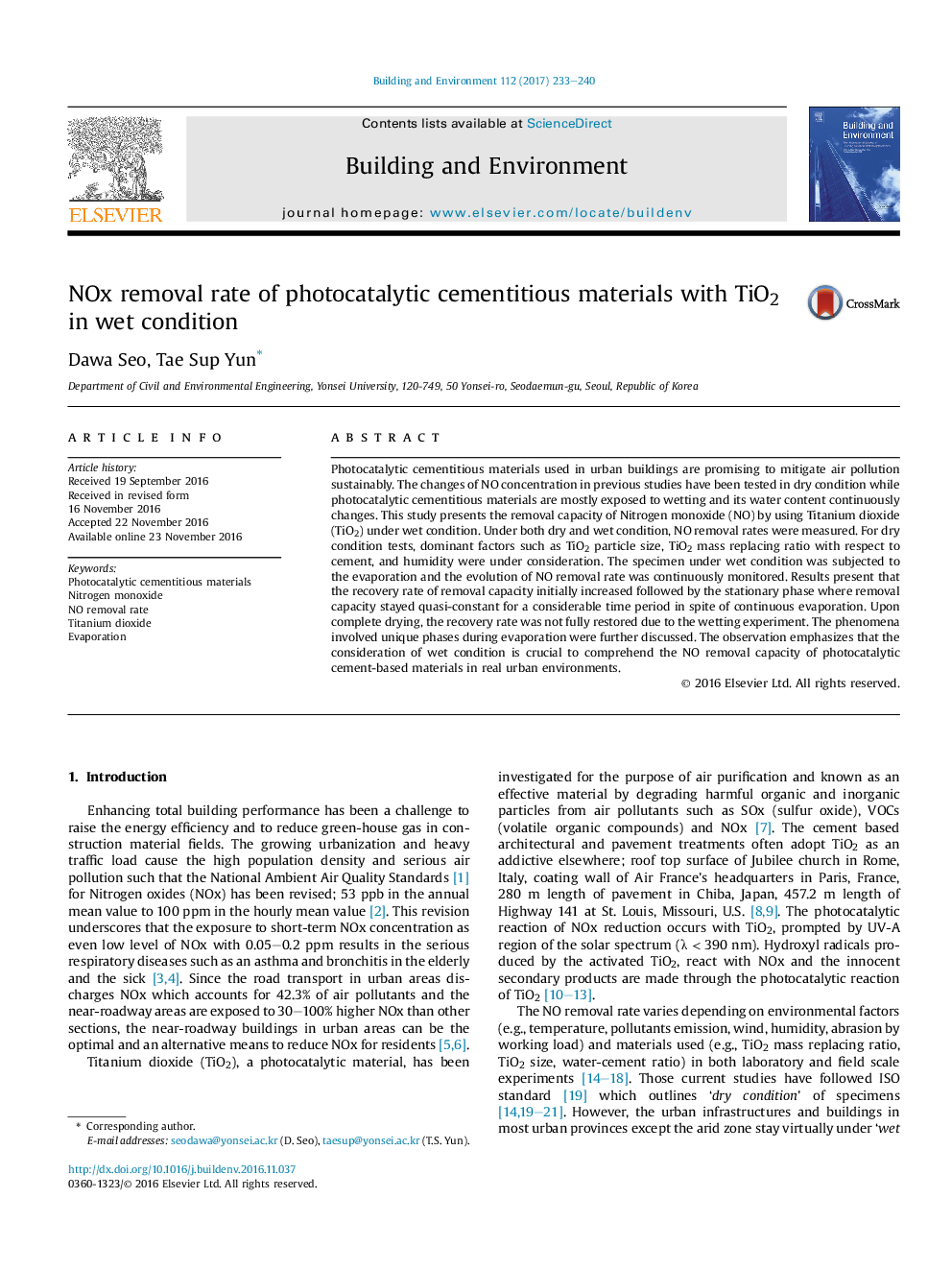| Article ID | Journal | Published Year | Pages | File Type |
|---|---|---|---|---|
| 4917467 | Building and Environment | 2017 | 8 Pages |
Abstract
Photocatalytic cementitious materials used in urban buildings are promising to mitigate air pollution sustainably. The changes of NO concentration in previous studies have been tested in dry condition while photocatalytic cementitious materials are mostly exposed to wetting and its water content continuously changes. This study presents the removal capacity of Nitrogen monoxide (NO) by using Titanium dioxide (TiO2) under wet condition. Under both dry and wet condition, NO removal rates were measured. For dry condition tests, dominant factors such as TiO2 particle size, TiO2 mass replacing ratio with respect to cement, and humidity were under consideration. The specimen under wet condition was subjected to the evaporation and the evolution of NO removal rate was continuously monitored. Results present that the recovery rate of removal capacity initially increased followed by the stationary phase where removal capacity stayed quasi-constant for a considerable time period in spite of continuous evaporation. Upon complete drying, the recovery rate was not fully restored due to the wetting experiment. The phenomena involved unique phases during evaporation were further discussed. The observation emphasizes that the consideration of wet condition is crucial to comprehend the NO removal capacity of photocatalytic cement-based materials in real urban environments.
Related Topics
Physical Sciences and Engineering
Energy
Renewable Energy, Sustainability and the Environment
Authors
Dawa Seo, Tae Sup Yun,
